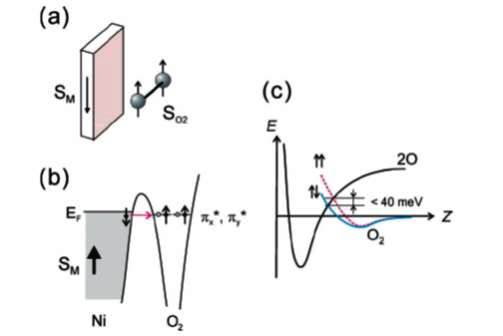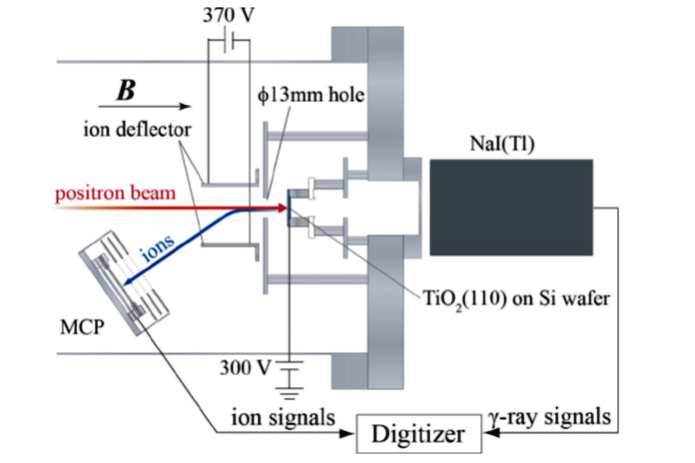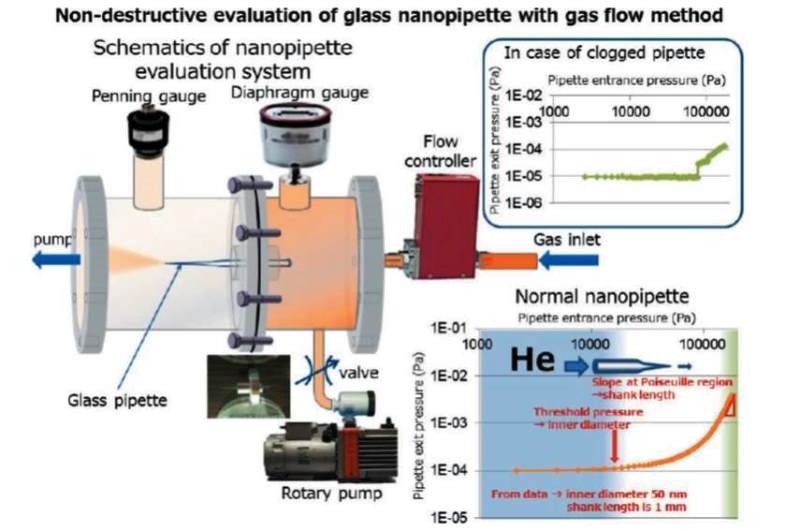All issues

Successor
Volume 36, Issue 12
Displaying 1-12 of 12 articles from this issue
- |<
- <
- 1
- >
- >|
Preface
-
Katsuyuki FUKUTANI2015 Volume 36 Issue 12 Pages 607
Published: December 10, 2015
Released on J-STAGE: December 22, 2015
JOURNAL FREE ACCESSDownload PDF (164K)
Special Issue: Development of New Particle Beams as Powerful Probes for Surface Science
-
Mitsunori KURAHASHIArticle type: Current Topic
2015 Volume 36 Issue 12 Pages 608-613
Published: December 10, 2015
Released on J-STAGE: December 22, 2015
JOURNAL FREE ACCESSA single spin-rotational state-selected [(J, M)=(2, 2)] O2 beam allows us to investigate how the molecular alignment and electron spin affect oxygen chemisorption. Recent experiments of O2 chemisorption on magnetized Ni(111) have indicated that O2 sticking probability is higher when its spin is oriented anti-parallel to the majority spin direction of the Ni substrate. The spin dependence becomes more significant at lower translational energy, and amounts to over 40% at thermal energy. This clear spin effect suggests that incident O2 molecules keep high spin polarizations even at the position of the dissociation barrier. In this article, the observed spin effect is reviewed after introducing the spinrotational state of O2 (3Σg-). View full abstractDownload PDF (747K)
View full abstractDownload PDF (747K) -
Hirokazu UETA, Li CHEN, Rainer D. BECKArticle type: Current Topic
2015 Volume 36 Issue 12 Pages 614-619
Published: December 10, 2015
Released on J-STAGE: December 22, 2015
JOURNAL FREE ACCESSThe dissociation of methane on Pt(111) was studied using quantum state-resolved methods and reflection absorption infrared spectroscopy (RAIRS), at a surface temperature of 150K where the nascent reaction products methyl(ads) and H(ads) are stable and accumulate on the surface. RAIRS used here for state-resolved reactivity measurements, enables us to monitor the methyl(ads) uptake during molecular beam deposition. The results show that methane dissociation is not only both translationally and vibrationally activated process but also can be bond-selective. View full abstractDownload PDF (632K)
View full abstractDownload PDF (632K) -
Takayuki TACHIBANAArticle type: Current Topic
2015 Volume 36 Issue 12 Pages 620-624
Published: December 10, 2015
Released on J-STAGE: December 22, 2015
JOURNAL FREE ACCESSPositron-stimulated desorption of ions from a TiO2(110) surface has been investigated. Desorbed O+ ions were detected using a time-of-flight technique. The energy dependence of the ion yields shows that the O+ ions were detected at energies much lower than the previously reported threshold for electron-stimulated desorption corresponding to the excitation energy of Ti3p core electrons. These results provide evidence that core-hole creation by positron annihilation with electrons in the core levels leads to desorption. View full abstractDownload PDF (911K)
View full abstractDownload PDF (911K) -
Tsuneo YASUE, Masahiko SUZUKI, Yoshikazu TAKEDA, Takanori KOSHIKAW ...Article type: Current Topic
2015 Volume 36 Issue 12 Pages 625-630
Published: December 10, 2015
Released on J-STAGE: December 22, 2015
JOURNAL FREE ACCESSA high brightness and highly spin polarized low energy electron microscopy (SPLEEM) is quite powerful tool to investigate surface magnetic domains of ferromagnetic materials. A high brightness and highly spin polarized electron source and a novel three-dimensional spin manipulator are developed and their details will be shown. The dynamic observation of the magnetic images with the acquisition time of 20 ms/image has been achieved. The stabilization of the perpendicular magnetic anisotropy in Co/Ni multilayer has been investigated with SPLEEM and it is concluded that this is induced mainly by the formation of the Co/Ni interface. View full abstractDownload PDF (997K)
View full abstractDownload PDF (997K) -
Shinichi OGAWAArticle type: Current Topic
2015 Volume 36 Issue 12 Pages 631-636
Published: December 10, 2015
Released on J-STAGE: December 22, 2015
JOURNAL FREE ACCESSA helium ion microscopy (HIM) was developed in 2006, and since then applications of the HIM technology have been eagerly studied at more than 20 organizations in the world. Several unique applications have been developed at AIST. In comparison with electron, helium ion has larger cross section, and it realized HIM observation of samples with less current because of higher efficiency of secondary electron generation for imaging, which results in less power implant (less thermal damage input) into the samples. At the same time helium ions penetrate deeper than electrons at optimal observation conditions. Utilizing these features, a soft material such as a low-k dielectric pattern and a Cu metal line underneath a 130 nm dielectric were imaged with less deformation (thermal damage). A few-40 nm diameter tungsten pillars were deposited under the helium ion beam irradiation in W(CO)6 gas atmosphere with high special resolution accuracy. The helium ion irradiation onto a graphene film could introduce defect in the film which control a conduction properties of the graphene. Possibility of ion beam luminescence was shown. View full abstractDownload PDF (1345K)
View full abstractDownload PDF (1345K)
Review
-
Tomohide TAKAMIArticle type: Review
2015 Volume 36 Issue 12 Pages 637-643
Published: December 10, 2015
Released on J-STAGE: December 22, 2015
JOURNAL FREE ACCESSThe developed apparatus and system for the injection method to introduce genes, proteins, and chemical compounds into single living cells and the perspective were reviewed. Especially, the trial to produce auto-injection machine, the merit, and the problem to realize practically and the methods to solve the problem were reviewed. View full abstractDownload PDF (1270K)
View full abstractDownload PDF (1270K)
Planning Series
Surface Science for Environmental Issues
-
Masatsugu SHIMOMURA2015 Volume 36 Issue 12 Pages 644-646
Published: December 10, 2015
Released on J-STAGE: December 22, 2015
JOURNAL FREE ACCESS
Science Café
Research Abroad
-
Yui OGAWA2015 Volume 36 Issue 12 Pages 647-648
Published: December 10, 2015
Released on J-STAGE: December 22, 2015
JOURNAL FREE ACCESSDownload PDF (858K)
Conference Report
-
Tomohiro HAYASHI2015 Volume 36 Issue 12 Pages 649
Published: December 10, 2015
Released on J-STAGE: December 22, 2015
JOURNAL FREE ACCESSDownload PDF (334K)
Qualifying Examination for Surface Science Engineers
-
2015 Volume 36 Issue 12 Pages 650
Published: December 10, 2015
Released on J-STAGE: December 22, 2015
JOURNAL FREE ACCESSDownload PDF (1231K)
News & Trends
-
2015 Volume 36 Issue 12 Pages 651
Published: December 10, 2015
Released on J-STAGE: December 22, 2015
JOURNAL FREE ACCESSDownload PDF (149K)
- |<
- <
- 1
- >
- >|

